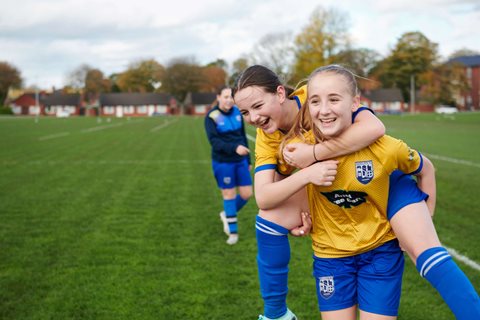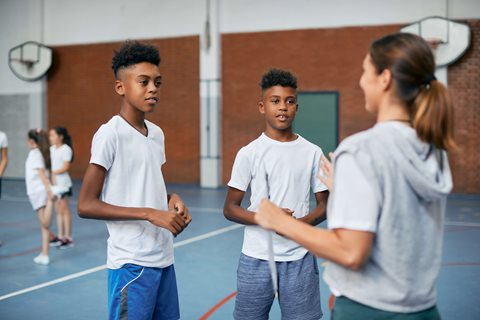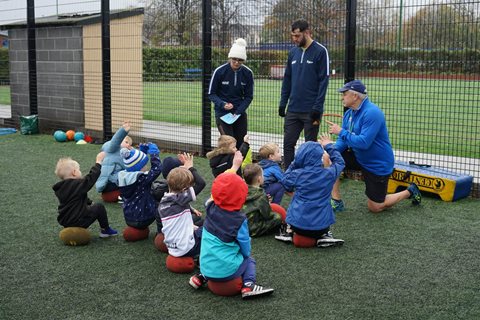Our cookies
We use essential cookies to make our website work smoothly for you. To make sure we're always improving, we'd like to use analytics to track how people use the site. We won't set non-essential cookies unless you give us permission. You can find more information about all the cookies we use in our Privacy and Cookie Policy.
Some cookies are a must for our website to function properly. If you turn off essential cookies, it may affect how you experience our site.
The non-essential cookies we use help us understand how you use our website and make improvements to enhance your experience.
Ruck and Roll: A Guide to Coaching Rugby to Children
Experienced coach, coach educator and lecturer in sports coaching Richard Cheetham MBE shares his top tips on delivering enjoyable and engaging child-first rugby sessions that guarantee a positive experience for all children who take part.
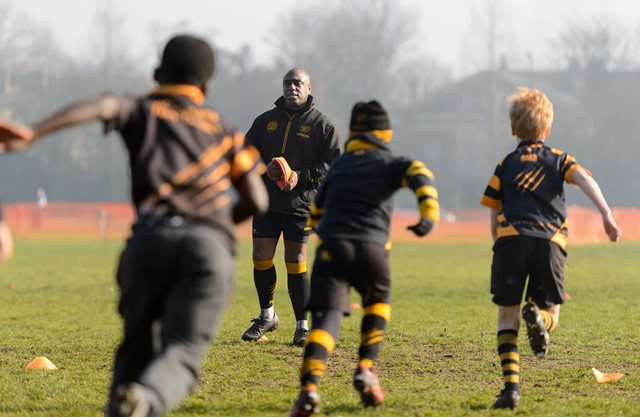
Included in this article:
by Blake Richardson
Every rugby coach will agree that the sound of children laughing is priceless.
And yet there exists in some circles the false notion that delivering coaching sessions where the emphasis is firmly on fun and enjoyment, and where the coach actively encourages children to participate in decision-making and gameplay, comes with a price.
The belief that overplaying the element of play could diminish children’s athletic and cognitive development and stymie the advancement of their technical ability and tactical nous is wide of the mark. This notion should be kicked into touch, you might say.
In fact, it is children’s smiles that feed engagement, motivation, and feelings of emotional safety – crucial foundation blocks in creating a rich learning environment.
The idea that smiles need to be rationed in some way is nonsense.
Coaches should never temper children’s right to play and have fun because, as we will see, play also drives skill acquisition and channels children’s natural competitive instinct in a positive and transformative way.
Richard is an ardent supporter of play and child-first coaching principles. Below are some of his favourite games and activities that rugby coaches of both codes – union and league – can use in their sessions. They align to the rights of children and young people to have a space to share their views, and the choice to shape how they play and participate, to enable them to develop holistically on their rugby journey.
Importance of creativity in coaching kids rugby
Coaches and children should combine their creative talents.
Engagement is a critical part of delivering a good rugby session. You have to make players interested and attached to the learning for effective learning to take place.
“The RFU promotes the APES principle,” says Richard, “which stands for active, purposeful, enjoyable, and safe. That first element is crucial. If children are all active, they are all engaged.”
Richard defines true engagement as: there’s nothing I would rather be doing than what I am doing right now.
It is an immersion in something. And when we have an environment where children truly engage, it is because they have helped create that environment.”
Children today live in a world where they no longer need to engage in things that require movement – like climbing trees or walking to the shops – because so many things today are automated.
“It creates even more emphasis when coaching rugby to children to create movement-based environments where coaches teach children how to move,” says Richard.
The dice game is a great way of engaging children and has the multiple benefits of being inclusive, encouraging creativity to flow – through experimenting with movement vocabulary – whilst helping the players get better at the basic skills of rugby by developing their physical literacy.
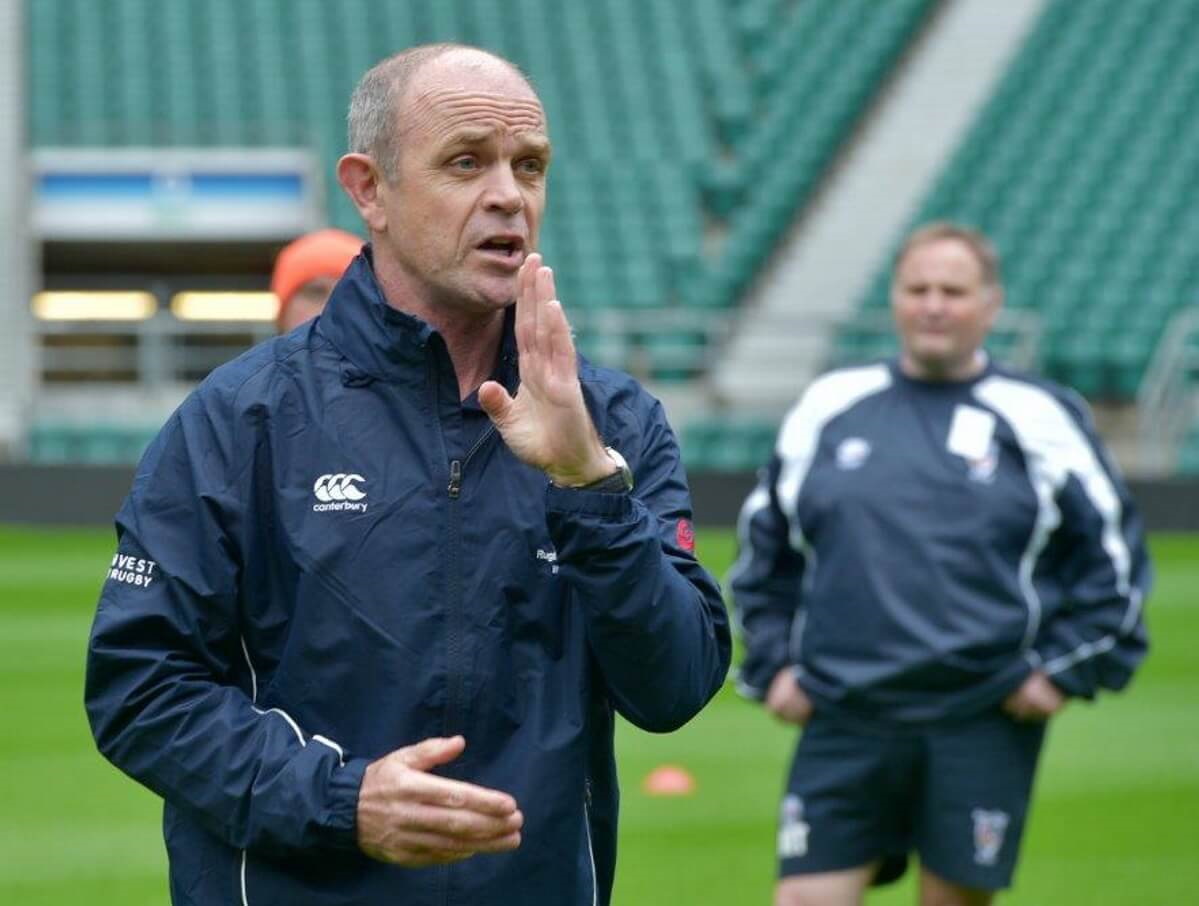
The Dice Game:
Set up cones in a square. Ask the children how they can travel from one side to the other, by moving in different ways.
Richard has blank dice and has written on each side of the dice a fundamental movement skill: roll, twist, jump, crawl, dodge, zigzag.
A child rolls the dice and whichever movement the dice lands on is how the group must move across the square, in multiple different directions.
“The children might jump as though they are catching a high ball and then land safely, which is also practising balance, because you have to be stable to secure the ball in rugby.”
Add another dice to the mix and have the children roll both dice. If they land on ‘twist’ and ‘jump’, then the children must twist and jump in whichever way they decide to sequence those movements.
“Their interpretation of the dice is their experience of the game,” says Richard.
Involve the children in the evolving game design by adding the element of choice. You might give them blank dice and ask them to decide which movements they want to work on that week, and to write them on each face of the dice.
For younger children, ask them if they are interested in ‘a visit to the zoo’ – a theme most children will instantly relate to – and write the names of different animals on the dice. Get them to link the movement skills to the animals they select by mimicking how they move: slithering like a snake, twisting like an alligator, jumping like a kangaroo.
The important thing here is that you allow them to show you the interpretation of what that could mean by using their imagination. It’s about being able to put the learning in a language they will understand.”
Let the children have as much fun experimenting with the rules as they do playing the game. There could be lions running amok (“the yellow bibs were the lions, the blue bibs were the lunch, so you’ve got evasion, chasing and footwork”).
More food for thought on how to fuse the creative talents of both the coach and the kids…
Pizza topping game:
Place rugby balls in the middle of the square and tackle shields in each corner. Children must run in with the tackle shields above their heads, put a ball on the tackle shield, run back to their starting position and shout what topping they’ve chosen: ‘Ham! ‘Mushrooms!’
One player might want pineapple on their pizza base, so as the game develops the children try to steal each other’s toppings to create their favourite pizza.
The game is an effective way of developing and improving defence, attack, possession, support, movement, agility, and dodge, all blended into one simple game-based activity.
“As the coach I will model the foundation of the game, starting with one simple rule, and the children will think of the next layer of challenge on top of the original challenge. It is the children who create the element of competition,” says Richard.
When coaching rugby to kids, use co-creation to develop players’ autonomy
You should by now be sold on the importance of supporting children to make choices by participating in decision making and game design through co-creation – where the onus is on the child to learn what does and doesn’t work.
The role of the coach is as a facilitator, encouraging children to share their ideas and engage in debate, and asking questions that help to layer their understanding as they begin to take ownership of the game.
The coach’s level of direction should be minimal, as the aim of the game is to give players greater autonomy and control over their learning.
The purpose of this game is to develop some of the principles of rugby union and rugby league through a small-sided game: possession, finding support, applying pressure, continuity and go-forward.
Set up a grid with different coloured cones on each corner. Teams score by passing to a team-mate on any of the cones. No running with the ball is allowed.
Players are not allowed to ‘wait’ on the cones – these must be kept free and only used when a clear pass will enable them to score on the cone.
Once a point is scored the opposition receives the ball but cannot score on the same cone twice.
Only dropped balls, scoring and interceptions will change possession.
The idea is to give them a little bit of direction,” says Richard. “Don’t say to them: ‘Have you got a game’, because that is too loose. You don’t know their level of experience and prior knowledge. Give them the premise of the game and the purpose of it.
“So, with four-corner score I will say things like, ‘how could we…?’, ‘what could we do next to be better at…?’ and they will finish the sentence.”
How to tailor this to younger rugby players
For younger children, the following line of questioning would be appropriate:
- What different ways have we tried so far and what has worked best?
- (After modifying the game) Can we still do the same things under these different rules and have the same success?
What to reflect on when coaching older, more experienced rugby players
Things to reflect on with older, more experienced players might include:
- How do we ensure the principle of go-forward is emphasised by modifying the game? (Alternate scoring at each end – they cannot score at the same cone or same side/end of the grid).
- In what way can we change the game to add realistic pressure?
- In which ways can players offer effective support to their teammates?
“This is when the players come back with ideas that you hadn’t thought of. Invariably, they will surprise you.”
Again, have fun experimenting. Remember, you must be agile as a coach. So, as you layer their understanding, you might decide to change the size and shape of the ball used. How much are the players challenged when you use a tennis ball as opposed to a rugby ball?
The positive knock-on effects of game-play through co-construction are numerous and profound. When the children have taken full ownership of the game:
- they develop a sense of belonging
- they will be more willing to take risks and experiment
- their confidence and self-esteem will rise dramatically
- they will learn to problem solve, both individually and as part of a group
- they will learn to recognise their own strengths and weaknesses
- they will learn different styles of communication and build leadership skills
- they will experience the importance of working together as a team and earn respect for each other beyond simply sharing equipment and taking turns.
Over a period of time, you get independent learners and thinkers, who develop a range of transferable skills they can use both in the competition environment and in the outside world.
Don’t take your eye off the ball! The importance of observation in coaching children’s rugby
While the Children’s Coaching Collaborative espouses a culture shift from adult-led to child-led coaching sessions, that doesn’t mean children should be allowed to assume complete control. Coaches need to strike the right balance.
Put another way, just because rugby is played with egg-shaped balls, doesn’t mean to say children should be allowed to run around like headless chickens and potentially leave a coach with egg on their face as the session degenerates into a free-for-all in front of watching parents!
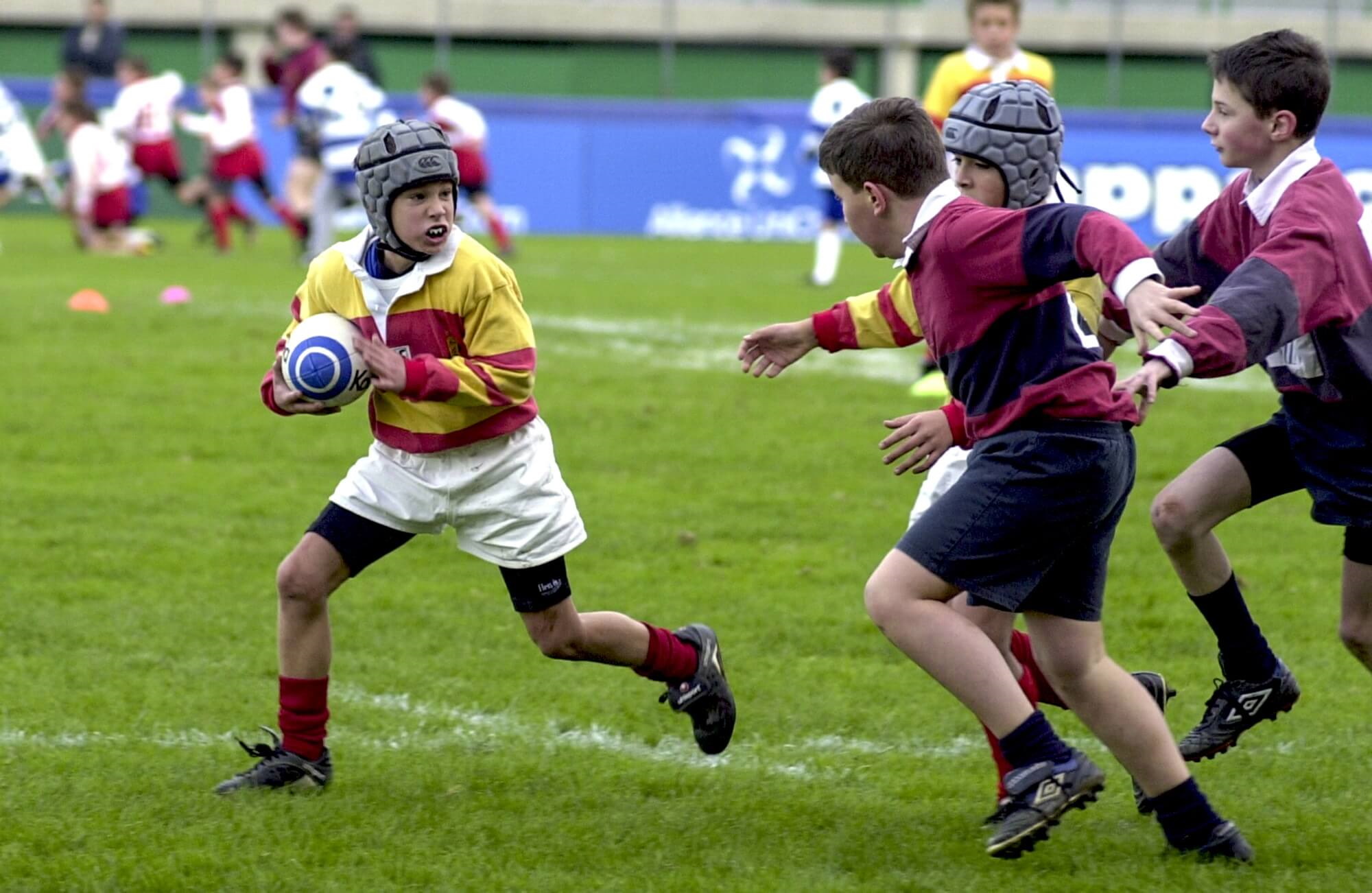
A simple activity that coaches can adopt to recognise and manage the mood and energy of the group is to observe the emotions of the players. Don’t just pay lip-service to it, really make the effort to notice the different emotions of your players, from when they first arrive at the session to how they react to the different games and activities.
The skill of observing often gets applied poorly, at a surface level. Are you really noticing what the group in front of you are telling you?”
The conclusions you draw will help you nip boredom in the bud, give you notice of when to adapt an activity that children find too easy or too difficult, or intervene if things are becoming a little too boisterous.
When it comes to coaching kids’ rugby, pick-up games – games that have been spontaneously started by a group – are an ideal way to ‘pick up’ on children’s mood and feelings.
The coach is not involved, you just watch… and learn.
“Children will do that. They don’t need you, they just need each other,” says Richard.
“I will get the coaches I work with on a Saturday to watch a session I run for 20 people. I tell them that the first thing I want them to look out for is emotion. What are the group projecting? What cues are they giving you?
“If it is about 5 out of 10, consider: is it the activity maybe? Or are they tired? Is it the weather? Have they come to the session with something clearly affecting them that I don’t know about?
Be an agile coach. Ask yourself: am I really bending to what the children want and need right now?”
5 Child-First Games
Don't drop the ball! Download our free tools, tips and games and grow your coaching practice – like these 5 games which support children to Play Their Way.
FREE GAMES
Safe rugby sessions: Gauge the children’s skill level
Playfulness and enjoyment may be the main driver for delivering engaging rugby sessions, but safety trumps all.
As fellow coach educator, and experienced rugby coach Russell Earnshaw explains in the UK Coaching article Child-centred Coaching Practices that Support Creating a Safe Environment for All, what children want is not always what they need.
“In terms of full contact in rugby… people are at different bus stops, aren’t they.
“I’ll have kids come up to me and say, ‘why aren’t we doing contact?' And I know full well that the majority aren’t at that level yet. So, I give the children who are perhaps bigger than everyone else and are ready for contact activities different rules to everyone else.
“That’s when I am quite explicit. I will provide the rationale as to why it’s dangerous for everyone to do contact before learning other skills first, and then I will check in with their parents about what I did to challenge them in different ways and why. Because there is no way I want a child injured physically or emotionally in any of my sessions.
I mean, every coach wants the children at their sessions to come back, right?”
It is still possible to centre the child’s voice in the process of individualising an activity.
Give them different options of activities, or of rules, and use questions and their feedback to co-create safer games: Why do you think we are putting in the boundaries here? Why are we doing it at this pace? What might happen if we don’t?
Piggyback touch is an interactive game where everybody is involved. It is important to stress that your assessment of children’s physical capacity will determine if it is safe for players to carry someone on their back.
One player is the carrier, the other rides on the back of their partner. If you have an odd number of players, one person becomes the ‘sweeper’. The object of the game is to make the ‘jockey’ drop the ball.
The sweeper picks up the ball and after a game of ‘rock paper scissors’, whoever loses has to give the sweeper a piggyback, and the carrier becomes the sweeper.
“What happens is everyone wants to carry the little kids because they are lighter. Therefore the big kids aren’t the ones who dominate,” says Richard.
There is plenty of scope to develop the game, which is a great example of how coaches can flex and adapt their collaborative approach to suit children’s different sizes and stages of development.
In rugby union, there is no positional focus for players until Under-13s. Teenagers, however, might choose to modify the game with the rule that a forward has to grab a back, a back grab a forward or, upping the ante further, a game of backs versus forwards.
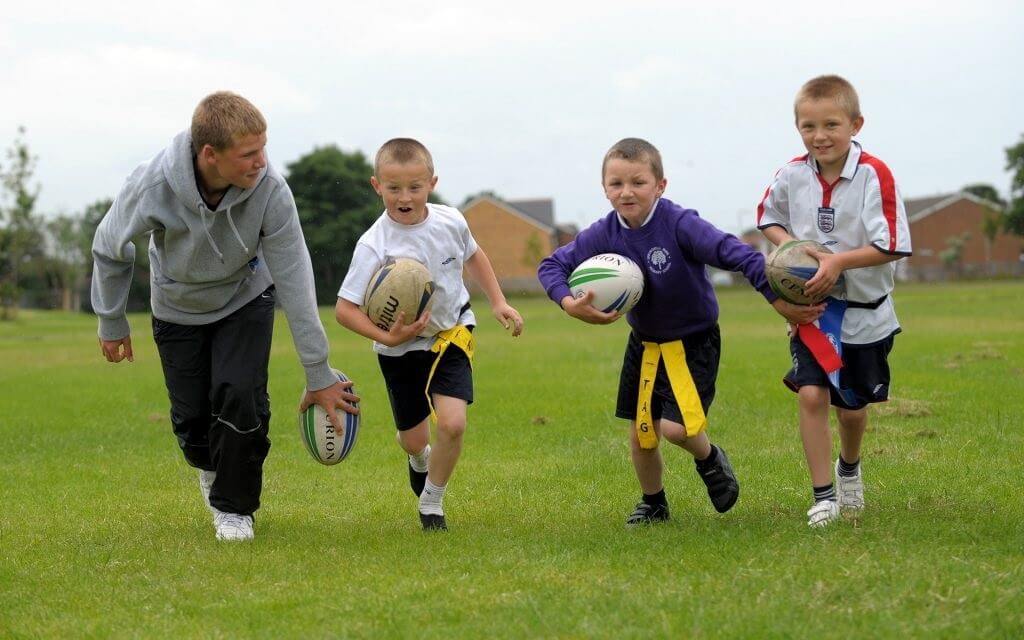
The Coaching Compass
Start your child-first coaching journey with the Coaching Compass! Simply answer a few quick-fire questions to create your unique child-first coaching profile.
Chart Your Course
Coach rugby inclusively: Involve all players
Piggyback touch also works well as a warm-up game. It is advisable to always start a session with an activity that is an energiser and that gains children’s attention by being fully inclusive, where everyone is moving, equipment is introduced, and no-one is left out.
Elimination games are a big no-no. You shouldn’t have children stood waiting, inactive on the sidelines.
Richard provides a fitting analogy. Imagine you take three children to the cinema. All pay £10. One child gets to watch the whole film, one half the film and the other only gets to watch a third of the film.
Two of the children would be feeling dejected, at best – and probably close to tears. The parents, meanwhile, would be apoplectic. There would be little to no chance they would accompany you to the cinema again in the future.
With host of the Play Their Way Podcast Laura-Jane Jones, Danielle 'Nolli' Waterman, an icon of England Rugby, invites listeners on a nostalgic journey back to the essence of child-driven play.
It’s the same with those children who turn up on a Sunday morning and pay their match fees. All have the right to the same experience and the same opportunity.”
In a single ten-minute 3v3 game, the number of decisions players must make and the number of touches they get of the ball is typically between 80 and 100.
“You are constantly passing and receiving; constantly learning and getting better. You have to trust people to find space and trust people to catch the ball.
In a full-sided game, a hierarchy often exists whereby competent kids only pass to competent kids, so the less competent get more and more marginalised because they are never given the opportunity to show what they can do or the opportunity to learn.”
Another approach that Richard uses to foster an inclusive environment is the freeze-frame technique, or as he has coined it…
Champagne moment
The idea is to identify something worthy of individual praise that happens in a group exercise.
By the end of the session most, if not all players, will have received some authentic feedback and genuine compliments. This boosts their self-worth and confidence and ultimately helps you gain players’ trust by earning their respect.
The lift that you can give children by identifying things that they do well can stay with them,” says Richard.
“So, I will pause the game – freeze-frame things – and view it like a heat map. I look at the parameters of the pitch to see what people are doing. I get that most activity will be five metres around the ball, but it’s important to look at what the other players are doing.”
It’s important that the same few players – “the oxygen-stealers” – don’t have a monopoly of attention and plaudits.
Make parents part of the team
Make a point of parents hearing the positive feedback you give to players during these champagne moments.
Richard will take a player to one side, within earshot of the parents.
“When you create that culture of individual feedback, that positivity will permeate through the mind of a player and parent.
“So, the car journey on the way home will be: ‘I heard the coach tell you that you did really well because you found space’.
“You are giving parents the narrative that shapes your coaching philosophy so that the lens a parent looks through is beyond getting hands on the ball and scoring a try.”
So even though a player hasn’t delivered a dazzling one-handed offload or gone on a jinking run, you are complimenting them on some other element of the game. For instance, their positional play: ‘Excellent! You were there to receive the ball. You found space’ or, ‘Incredible! You put pressure on players so they couldn’t break through and score’.
Richard's advice:
Don’t isolate parents, educate them. They are interested in their child’s learning and are part of the community who surrounds the player – the support network. You need to attach yourself to them. They are not scrutinising what you do, they are just eager to be informed.”
Other resources you may like...
About the contributor
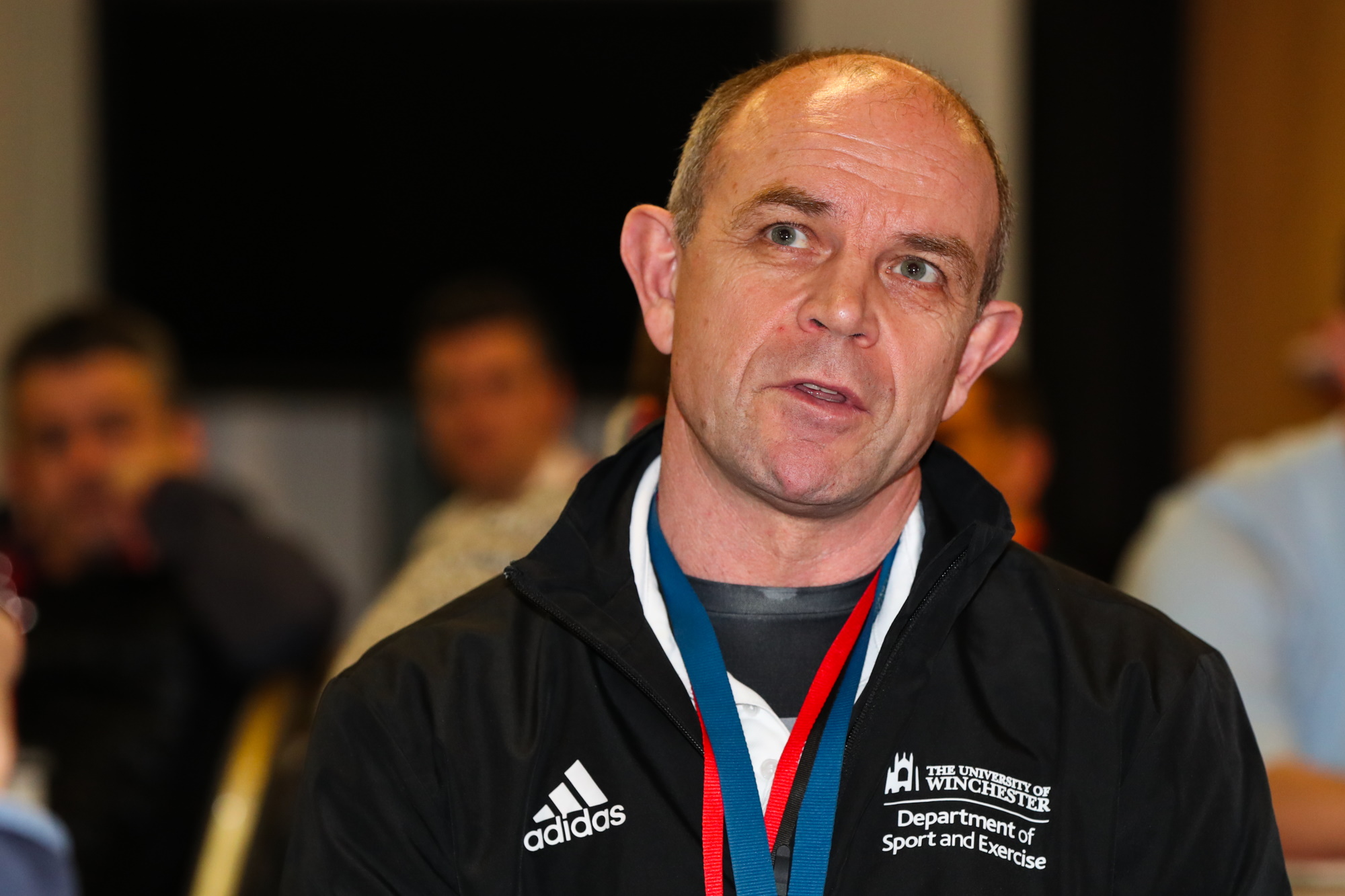
Richard Cheetham MBE is a rugby coach, coach educator and Senior Fellow in Sports Coaching at the University of Winchester. His unofficial job title, 'Professor of Play', is appropriate and richly deserved. Richard received an MBE for his contribution to education and community sport in the 2017 New Years honours list.
SHARE THE MOVEMENT
Help spread the word by sharing this website with fellow coaches!

